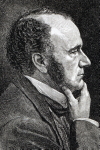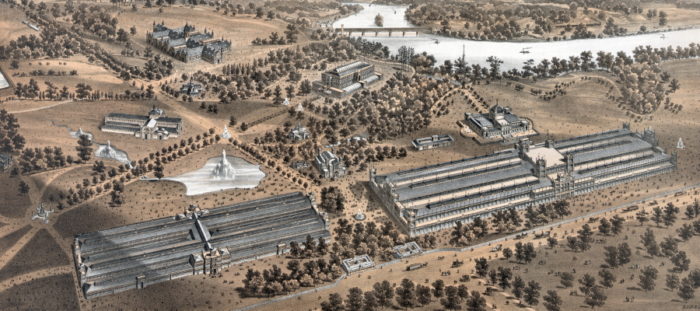
I have long been intrigued by manufacturing on the Hill, and, in particular, the scientific instruments that were built here or by locals. I came across another instrument manufacturer, though one who has remained remarkably resistant to finding out much of what he did, mainly because of his utterly generic name: John Clark.
As best as can be ascertained, Clark was born about 1816 in England, then moved with his parents to Philadelphia. His father was an instrument maker there, and so John was brought into the business. However, some time before the Civil War, the younger Clark set out on his own and moved to Washington, where he opened his own shop. In an 1859 business directory in the Washington Evening Star, “J. Clark, math’l instrument maker, 400 1st st east.” is the only listing under the rubric “Mathematical Instruments.” Right around this time, Clark married. Shortly thereafter, John and his wife Mary had their first child, and named her after her mother. The following two children were both boys, John and James, named with a truly remarkable lack of inspiration.
During the Civil War, Clark joined the federal workforce, and he is listed as an instrument maker in the list of “Officers attached to the United States Naval Observatory and Hydrographical Office” in the 1865 register.
Some time in the next decade, Clark would move to the United States Coast Survey, once again as an instrument maker. In 1875, he would be the highest paid man doing that job, indicating his talent. One of the others with the same job description was William Würdemann, who, along with Benjamin Franklin’s great-grandson Alexander Dallas Bache, had designed a new base line apparatus (essentially a metal rod that was resistant to expansion or contraction when heated or cooled, and could thus be used to measure distances) that Clark would refine and produce for use in measuring the Pacific coast.
In 1876, Carlile Pollock (pictured) the head of the Coast Survey also gave Clark the honor of running the offices display at the Centennial Exhibit in the Philadelphia. The exhibit mainly consisted of charts and maps produced by them – their primary function – but also the instruments that were used in their measurement and production, which was where Clark’s expertise came in.

But Clark’s main work was, as the 1886 report of his employer – now named the United States Coast and Geodectic Survey – indicated “repairs of vertical circles, leveling rods, gradienters, surveyor’s compasses, and magnetic instruments.”
Clark, who was now about 70, also retired in that year. He had been living at 808 East Capitol for some years, but moved to 5th Street Norteast later in the 1880s, dying there on June 10, 1890. Or, at least someone name John Clark died there on that day and was buried in Congressional Cemetery. Whether it was the former employee of the Coast Survey is not mentioned in the papers of the time.
